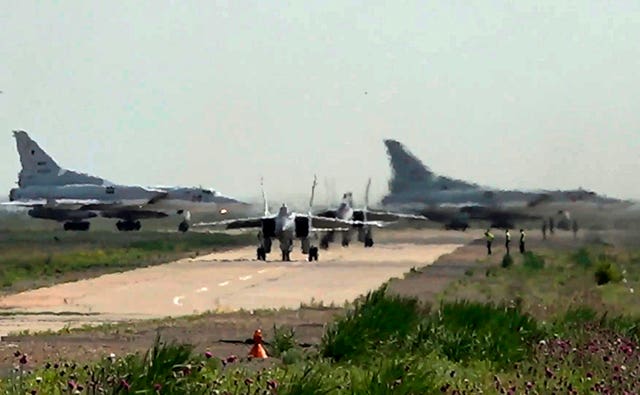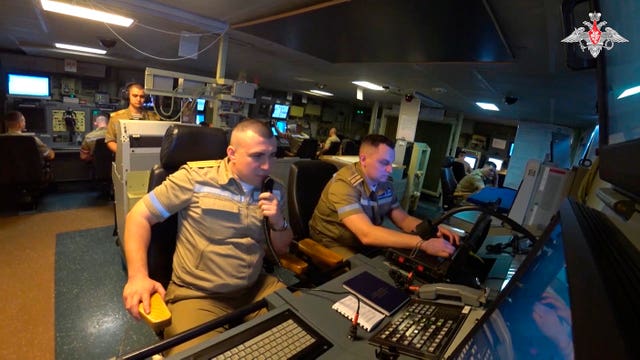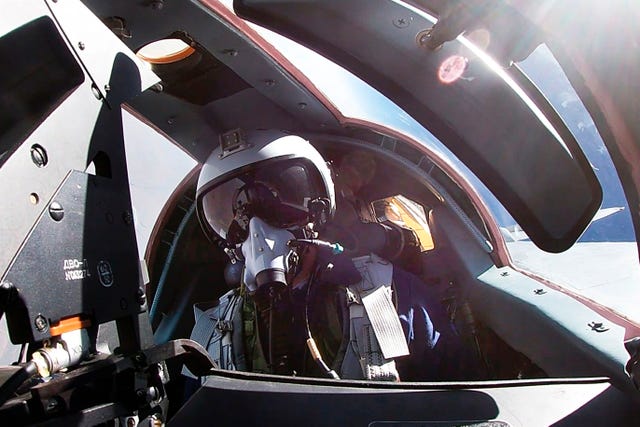Russia and its ally Belarus have launched a second stage of drills intended to train their troops in tactical nuclear weapons – part of the Kremlin’s efforts to discourage the West from ramping up support for Ukraine.
In announcing the nuclear manoeuvres last month, the Russian Defence Ministry said they were in response to “provocative statements and threats of certain western officials regarding the Russian Federation”.
The Kremlin has expressed outrage after French President Emmanuel Macron said he does not exclude deploying troops to Ukraine, and the US and some other Nato allies allowed Kyiv to use the weapons supplied by them for striking targets on the Russian territory.

Speaking to reporters on Tuesday, Kremlin spokesman Dmitry Peskov said that such drills and maintaining combat readiness are important in view of the “hostile decisions and actions” by the US and its allies in Europe and their “daily provocations”.
Sergei Shoigu, the secretary of Russia’s Security Council, said in remarks published on Tuesday that the manoeuvres were a response to “western support of the Kyiv regime, active involvement of Nato’s troops in combat operations in Ukraine and an effective permission for Kyiv to launch missile strikes on Russian civilian facilities”.
He added that the drills were also part of Moscow’s reaction to Nato allies beefing up their military potential near Russia’s borders.
During the second stage of the drills that began on Tuesday, Russian and Belarusian troops will undergo joint training in non-strategic nuclear weapons used in combat, the Defence Ministry said.
It noted that the exercise is aimed at maintaining readiness of personnel and equipment to ensure “sovereignty and territorial integrity” of the alliance of Russia and Belarus.

The first stage of the exercise last month envisaged a preparation for nuclear missions and deployment for launches, according to the Defence Ministry.
The Russian military had trained separately during the initial stage of the manoeuvres before joint drills with Belarusian forces.
Last year, Russia moved some of its tactical nuclear weapons into neighbouring Belarus, which also borders Ukraine and Nato members Poland, Latvia and Lithuania.
Belarus’ authoritarian President Alexander Lukashenko has relied on close ties with Russia and provided his country as a staging ground for the war in Ukraine.
Tactical nuclear weapons include air bombs, warheads for short-range missiles and artillery munitions and are meant for use on a battlefield.

Usually they are less powerful than the strategic weapons — massive warheads that arm intercontinental ballistic missiles and are intended to obliterate entire cities.
Russian President Vladimir Putin has noted, however, that even Russia’s battlefield nuclear weapons are much more powerful than the two atomic bombs the US dropped on Japan at the end of World War Two.
Last week, Mr Putin declared that the West is wrong to proceed with the assumption that Russia will never use its atomic arsenal.
Mr Putin pointed at the country’s nuclear doctrine that envisages the use of nuclear weapons in case of a threat to its sovereignty and territorial integrity.
At the same time, he said he sees no current threat to Russia’s sovereignty that would warrant the use of nuclear weapons and emphasised that Moscow does not need them to defeat Ukraine.
The Russian leader has repeatedly reminded the West about the country’s nuclear might since he sent troops into Ukraine in 2022.




Comments: Our rules
We want our comments to be a lively and valuable part of our community - a place where readers can debate and engage with the most important local issues. The ability to comment on our stories is a privilege, not a right, however, and that privilege may be withdrawn if it is abused or misused.
Please report any comments that break our rules.
Read the rules hereLast Updated:
Report this comment Cancel